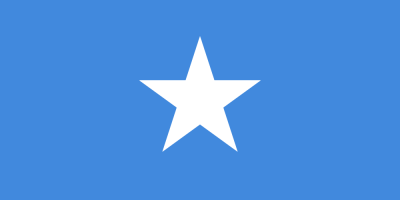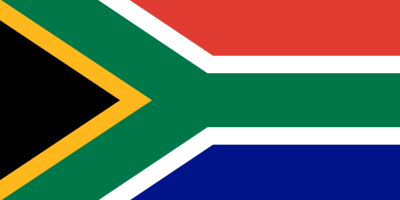Libya flag color codes features a simple tricolor design of red, black, and green bands with a white crescent and star centered on the black stripe. The Libya flag color codes in various formats provide precise specifications for reproducing this iconic banner. Decoding the Libya flag color codes in HTML HEX, RGB, PANTONE, HSL, CMYK, HWB, and NCOL models defines the exact shades of red, black, green and white that make up the country’s national standard. Understanding these Libya flag color codes is useful for graphic designers, artists, and anyone looking to accurately represent the flag of Libya in print, digital design, and other media. This article will break down the meanings behind the flag elements and specify the precise Libya flag color codes across common color formatting systems.
Table of Contents
What are the colors of Libya flag?
The colors of the Libya flag are:
- Red
- Black
- Green
- White
More specifically:
- Red: This red color is known as Libyan Red and is a bright shade of red.
- Black: The black band represents the dark days of colonialism under the Italian occupation.
- Green: The green band symbolizes prosperity and Libya’s agricultural capabilities.
- White: The white crescent and star is a traditional Islamic symbol featured on many Muslim countries’ flags. On Libya’s flag, the white stands for peace.
So in summary, the four colors are a symbolic red, black, green, and white. These colors come together in three horizontal bands with the white crescent and star centered on the black band.
Libya flag color codes & Color Names:
RED
| Color Model | Value |
|---|---|
| HTML | #E70010 |
| HEX | E70010 |
| RGB | 231, 0, 16 |
| PANTONE | 186 C |
| HSL | 357°, 100%, 45% |
| CMYK | 0%, 100%, 93%, 9% |
| HWB | 357°, 9%, 9% |
| NCOL | 0, 100, 81 |
BLACK
| Color Model | Value |
|---|---|
| HTML | #000000 |
| HEX | 000000 |
| RGB | 0, 0, 0 |
| PANTONE | Black |
| HSL | 0°, 0%, 0% |
| CMYK | 0%, 0%, 0%, 100% |
| HWB | 0°, 0%, 100% |
| NCOL | 0, 0, 0 |
GREEN
| Color Model | Value |
|---|---|
| HTML | #24AB18 |
| HEX | 24AB18 |
| RGB | 36, 171, 24 |
| PANTONE | 355 C |
| HSL | 110°, 76%, 39% |
| CMYK | 79%, 0%, 86%, 33% |
| HWB | 110°, 33%, 33% |
| NCOL | 90, 0, 67 |
WHITE
| Color Model | Value |
|---|---|
| HTML | #FFFFFF |
| HEX | FFFFFF |
| RGB | 255, 255, 255 |
| PANTONE | White |
| HSL | 0°, 0%, 100% |
| CMYK | 0%, 0%, 0%, 0% |
| HWB | 0°, 100%, 0% |
| NCOL | 0, 0, 100 |
What is the meaning of colors in the Libya flag?
The colors of the Libyan flag each have symbolic meaning:
Red: The bright red band at the top of the flag represents the bloodshed during the struggle against Italian colonial occupation. It signifies the sacrifices and hard-won freedom of the Libyan people.
Black: The black band in the middle represents the dark days of colonial oppression under Italian rule. It serves as a reminder of the hardships endured during that period.
Green: The green band at the bottom symbolizes prosperity, hope, and Libya’s agricultural and natural riches. It points to a bright future ahead for the nation.
White: The white crescent and star is a traditional Islamic symbol featured on many Muslim countries’ flags. On Libya’s flag, the white stands for peace.
So in summary:
- Red = bloodshed and sacrifice
- Black = colonial suffering
- Green = prosperity and hope
- White = peace
The pan-Arab colors of red, black, green, and white unite to create a symbolic flag representing Libya’s history of hardship and hope for a peaceful and prosperous future as an independent nation.
Explore More Flag Colors:
- Mauritius Flag Color Codes
- North Korea Flag Color Codes
- North Macedonia Flag Color Codes
- Uganda Flag Color Codes
FAQs: Frequently Asked Questions:
Why is Libya banned?
Libya has not been banned as a whole. However, it’s important to note that political situations and international relations can change, and new developments may have occurred since then.
Historically, Libya faced international isolation and sanctions during the rule of Muammar Gaddafi due to various reasons, including human rights abuses, support for terrorism, and the involvement in conflicts.
Is Libya a poor country?
Libya has faced economic challenges and political instability. The country has significant oil reserves, and historically, oil exports have been a crucial source of revenue for Libya. However, the political turmoil and conflicts since the overthrow of Muammar Gaddafi in 2011 have had a negative impact on the economy.
The economic situation in Libya can be complex, with factors such as political instability, security concerns, and fluctuations in oil prices affecting the country’s economic performance. Additionally, the ongoing conflict has disrupted infrastructure, government services, and overall economic activities.
Who rules Libya now?
Libya has been facing a complex political situation with multiple factions vying for control. The situation in Libya has been marked by political divisions, armed conflicts, and the presence of various militias.
The Government of National Unity (GNU) was formed in March 2021 as a result of the UN-led peace process. The GNU was intended to serve as a transitional government and lead the country toward national elections. Abdul Hamid Dbeibah was appointed as the Prime Minister of the GNU.
What is Libya known for?
Libya, located in North Africa, is known for several aspects, including its history, culture, and geography. Here are some key elements for which Libya is known:
Historical Sites: Libya is home to several ancient archaeological sites, including the Roman city of Leptis Magna and the Greek-influenced city of Cyrene. These sites reflect the historical significance of the region and have been recognized as UNESCO World Heritage Sites.
Sahara Desert: A significant portion of Libya is covered by the Sahara Desert, the largest hot desert in the world. The vast and arid landscapes of the Sahara are a defining feature of Libya’s geography.
Oil Reserves: Libya possesses substantial oil reserves, and oil production has been a crucial factor in its economy. The country has historically been an important player in the global oil market.
Cultural Heritage: Libya has a rich cultural heritage influenced by its history as a crossroads of various civilizations, including Phoenician, Roman, Greek, and Arab influences. This is reflected in its architecture, cuisine, and traditions.
Is Libya a rich or Poor country?
Libya has historically been considered a country with significant wealth due to its substantial oil reserves. Oil has been a major contributor to Libya’s economy, providing substantial revenue for the government. However, despite its wealth in natural resources, the country has faced economic challenges and political instability.
The political turmoil and conflicts since the overthrow of Muammar Gaddafi in 2011 have had a negative impact on Libya’s economy. The oil sector, a primary source of revenue, has experienced disruptions, and the overall economic infrastructure has been affected.
Why is Libya so rich?
Libya has been considered relatively wealthy primarily due to its significant oil reserves. The country has one of the largest proven oil reserves in Africa and the Middle East. The oil industry has historically been a major contributor to Libya’s economy, accounting for a substantial portion of its government revenue and export earnings.
Key factors contributing to Libya’s wealth include:
Abundant Oil Reserves: Libya possesses vast oil reserves, with much of its economy dependent on oil extraction, production, and export. The country has high-quality, light crude oil, which is sought after in the global market.
Oil Export Revenue: The revenue generated from the export of oil has historically been a major source of income for the Libyan government. Oil exports contribute significantly to the country’s foreign exchange earnings.
Strategic Location: Libya’s geographic location, with a long Mediterranean coastline, provides easy access to maritime trade routes. This has facilitated the export of oil and other goods, contributing to economic activity.
Low Population Density: Libya has a relatively low population density compared to its vast land area. This has meant that the country’s natural resources, including oil, can be a significant source of income per capita.
Is Libya Religious?
Yes, Libya is a predominantly Muslim country, and Islam is the dominant religion. The overwhelming majority of Libyans adhere to Sunni Islam, and the country has a rich Islamic heritage. Islam plays a significant role in the culture, traditions, and daily life of the Libyan people.
The practice of Islam in Libya is influenced by various schools of Islamic thought, and the country has a history of being a center of Islamic scholarship and culture. Mosques are important religious and communal centers, and Islamic principles often guide various aspects of Libyan society.
What is the Libya currency?
the official currency of Libya is the Libyan Dinar (LYD), which is abbreviated as LD or simply referred to as Dinar. The Central Bank of Libya is responsible for issuing and regulating the currency. The Libyan Dinar is divided into 1,000 dirhams.
It’s important to note that the economic and political situation in Libya has been dynamic, and there may have been changes or developments since my last update. Therefore, for the most current information regarding the currency in Libya, it is advisable to refer to recent financial reports, official sources, or reliable news outlets.
What food do people eat in Libya?
Libyan cuisine is influenced by the country’s geographical location, cultural history, and the availability of local ingredients. Here are some common foods that people eat in Libya:
Couscous: Couscous is a staple in Libyan cuisine. It is often served with various toppings, such as vegetables, meat, or fish. Couscous dishes are a popular choice for both everyday meals and special occasions.
Shawarma: Grilled or roasted meat, typically chicken or lamb, is commonly enjoyed in the form of shawarma. It is often served in flatbreads or wraps with vegetables and garlic sauce.
Bazeen: Bazeen is a traditional Libyan dish made from barley flour and water. It has a thick consistency and is usually served with a sauce made from tomatoes, garlic, and olive oil. Bazeen is often associated with festive occasions.
Arayes: Arayes are grilled sandwiches made with meat, usually minced lamb or beef, seasoned with spices and herbs. The meat is stuffed into flatbreads and grilled until crispy.
Harira: Harira is a hearty soup made with tomatoes, lentils, chickpeas, and various herbs and spices. It is commonly consumed during Ramadan and other special occasions.













